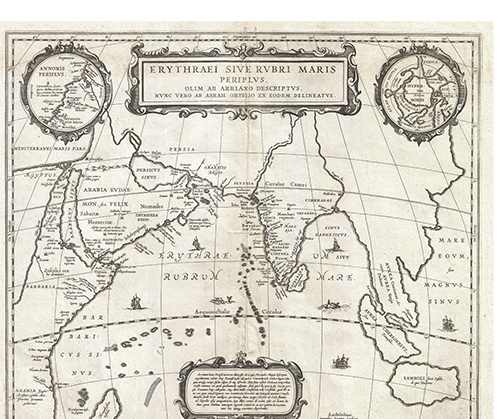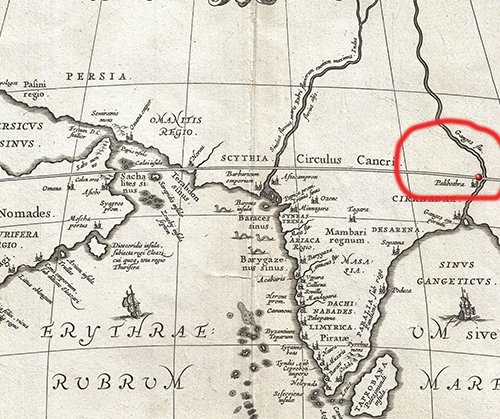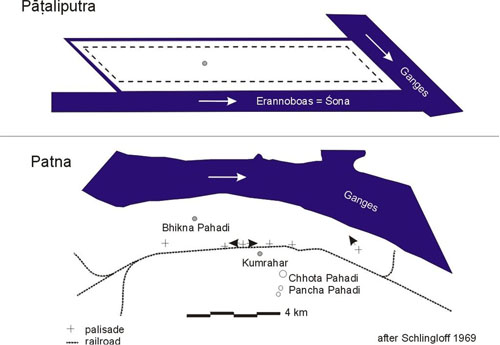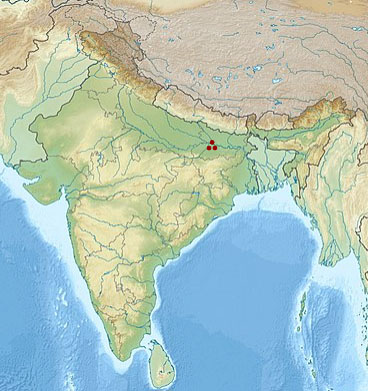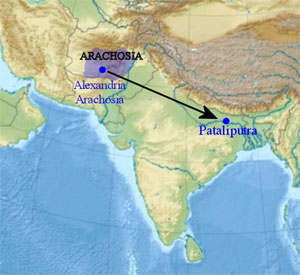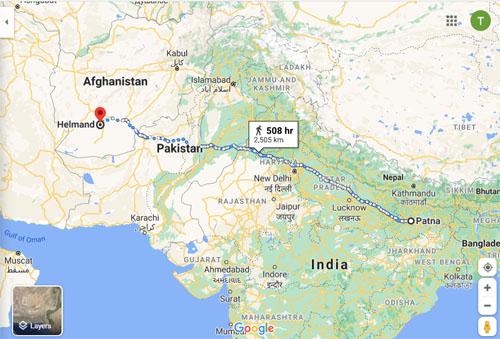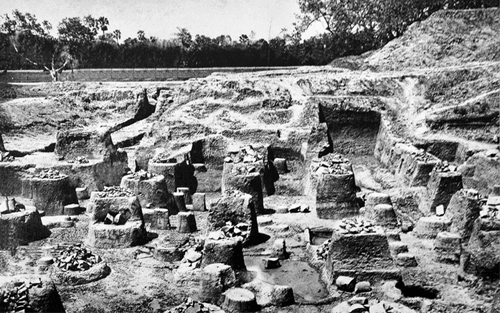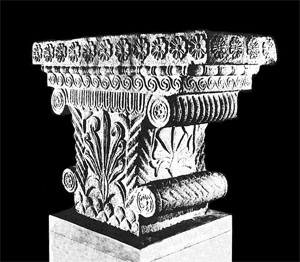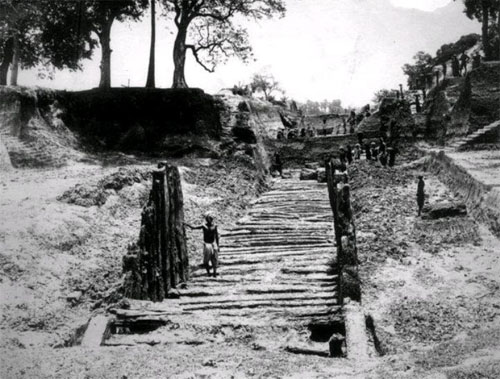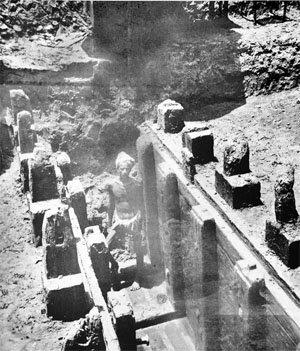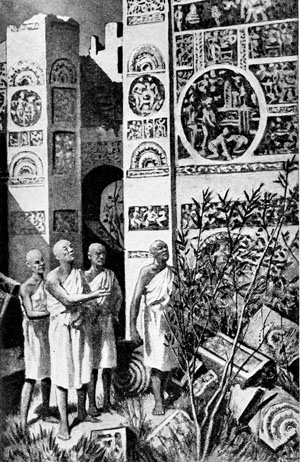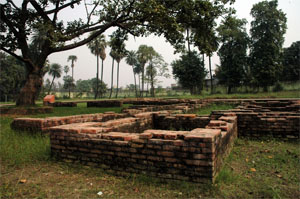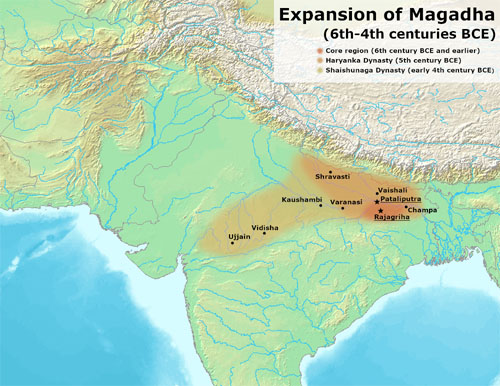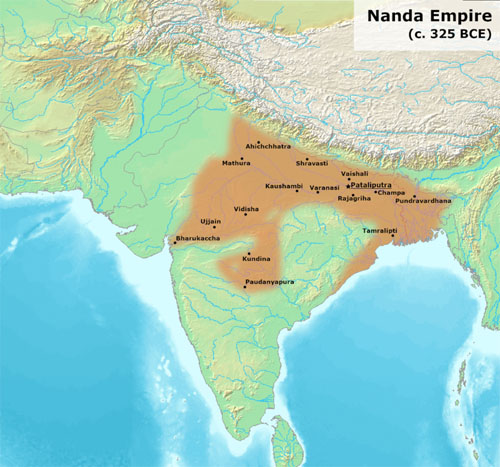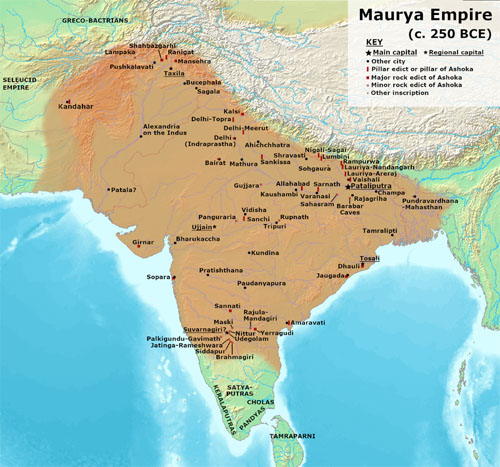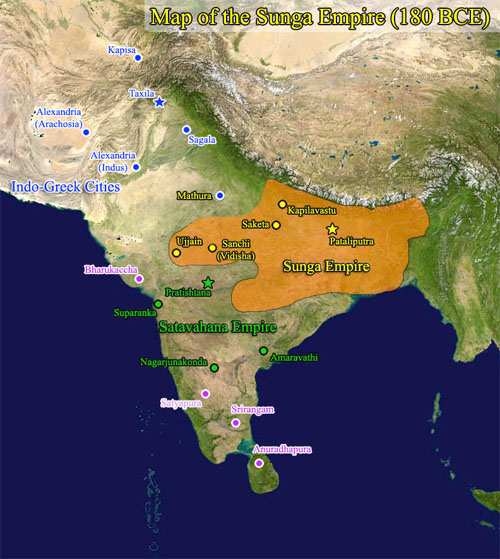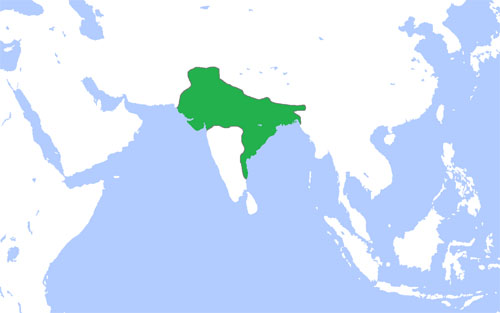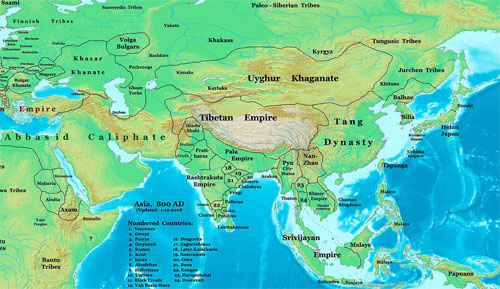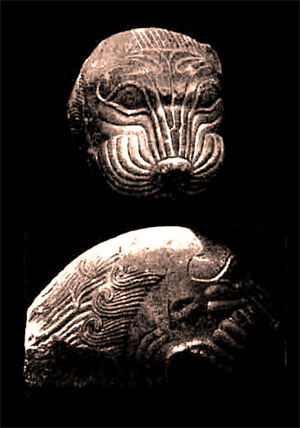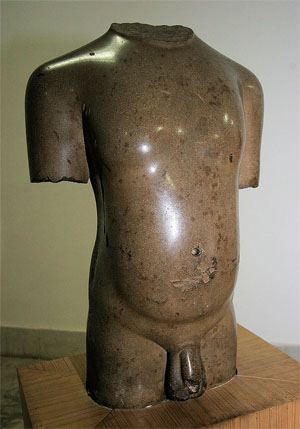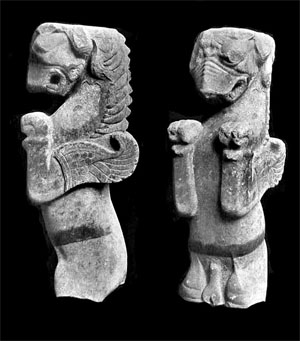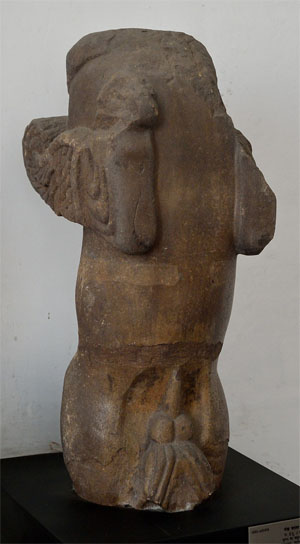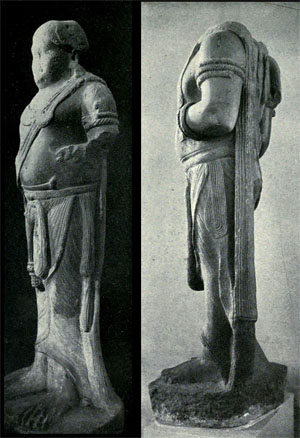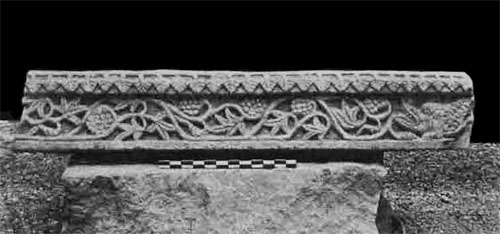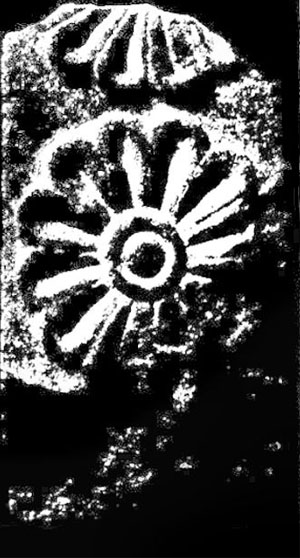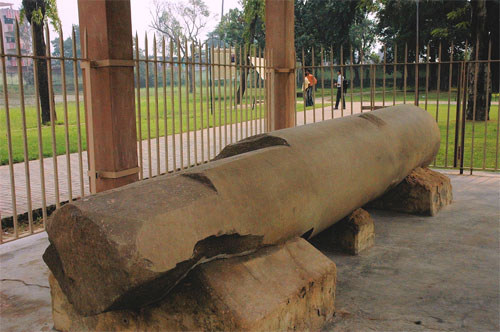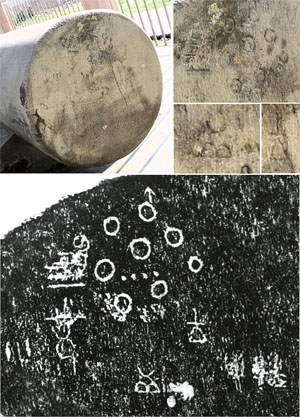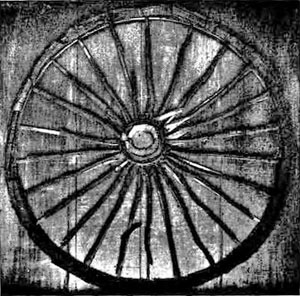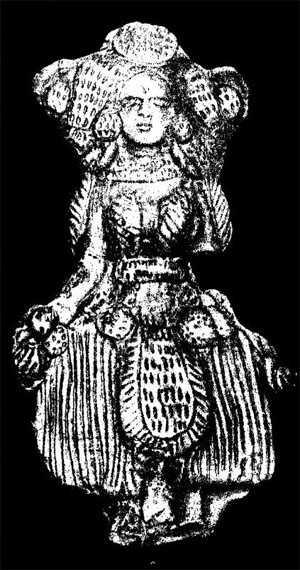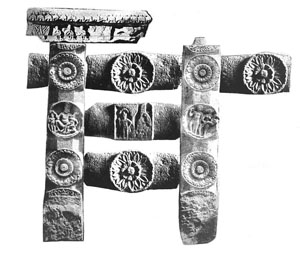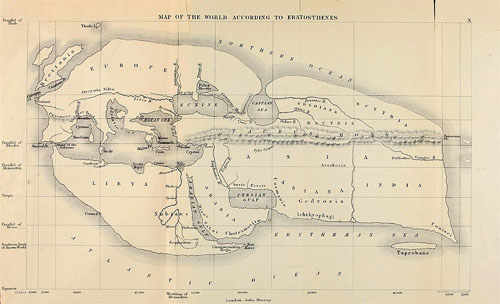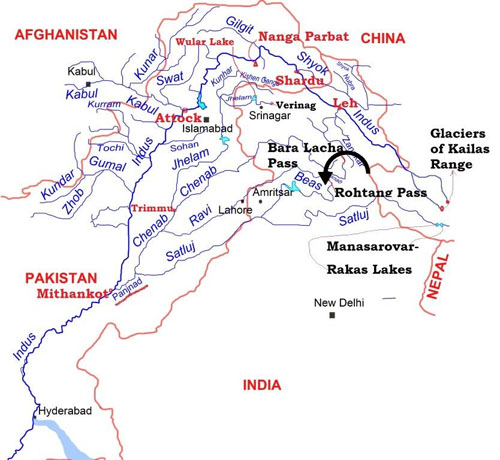The Saka Era of Varahamihira (Salivahana Saka) [Rep. from Journal of Indian History (Trivandrum), 36 (1958) 343-67, Excerpt, from Collected Papers on Jyotisha. P. 275-287
by T.S. Kuppanna Sastry (Former Hony. Professor, Sanskrit College, Madras)
1989
NOTICE: THIS WORK MAY BE PROTECTED BY COPYRIGHT
YOU ARE REQUIRED TO READ THE COPYRIGHT NOTICE AT THIS LINK BEFORE YOU READ THE FOLLOWING WORK, THAT IS AVAILABLE SOLELY FOR PRIVATE STUDY, SCHOLARSHIP OR RESEARCH PURSUANT TO 17 U.S.C. SECTION 107 AND 108. IN THE EVENT THAT THE LIBRARY DETERMINES THAT UNLAWFUL COPYING OF THIS WORK HAS OCCURRED, THE LIBRARY HAS THE RIGHT TO BLOCK THE I.P. ADDRESS AT WHICH THE UNLAWFUL COPYING APPEARED TO HAVE OCCURRED. THANK YOU FOR RESPECTING THE RIGHTS OF COPYRIGHT OWNERS.
The kaliyuga era was first attested to by the ancient astronomer Āryabhaṭa, who assumed the beginning of kaliyuga to be 3600 years before the 23rd year of his life, which corresponds to the year 499 CE. Traditionalists love referring to the inscription of King Pulakeśin II in Aihole, Karṇāṭaka, which allegedly supports this dating. However, this inscription dates from the year 634 CE and is therefore even younger than Āryabhaṭa. Moreover, some authors refer to a number of title deeds written on copper plates that allegedly go back to King Janamejaya, who is said to have lived near 3000 BCE. However, these “copper grants” are obvious forgeries that served the purpose to support claims of ownership. Hence the statement found in Āryabhaṭa’s work is in fact the oldest testimony for the kaliyuga era, and over a whole period of 3600 years, the alleged tradition did not leave any trace in literary or archaeological sources. It must therefore be considered speculation. While the Mahābhārata and the Purāṇas do provide evidence that planetary clusterings were observed and considered important in ancient times, there is no available evidence that could support the kaliyuga era commencing in either 3102 or 3104 BCE.
Serious scholars therefore, do not accept the idea that the kaliyuga beginning on 18th February 3102 BCE is based on a true, unbroken tradition. Rather they assume that this date was back-calculated by Indian astronomers of late antiquity. It served as a mooring point for a theory of planetary cycles, as given in the Sūryasiddhānta, the most important work on ancient Indian astronomy....
There is a text found in several of the Purāṇas that links the beginning of the Kaliyuga with the death of Kṛṣṇa. However, instead of a conjunction of all planets, it mentions a conjunction of the Seven Ṛṣis in the lunar mansion Maghā. This text can be found in several different variations in VP 4.24.102ff., BhP 12.2.24ff., BrAP 2.74.225ff., MatsyaP 271.38ff. The text begins as follows:From the birth of Parīkṣit until the inauguration of Nanda,
one must know, there are 1015 (var. 1050, 1115, 1500) years.
Parīkṣit is the first king of Hastināpura after Yudhiṣṭhira. His inauguration took place after Kṛṣṇa’s funeral, when Yudhiṣṭhira and his brothers renounced the kingdom and abdicated. Nanda is also called Mahāpadma in some versions of the text. He was the first king of the Nanda dynasty of Magadha. According to the Viṣṇupurāṇa, the Nandas ruled for about 100 years and were followed by Chandragupta Maurya, who seized power over Maghada in 321 BCE. The great number of variations of this text, e.g. the numbers of years mentioned, illustrates the text’s poor transmission. It is difficult to have confidence in any data given in it. Since the time between Parīkṣit’s seizure of power and Mahāpadma is between 1000 and 1500 years, Parīkṣit’s lifetime and the Mahābhārata battle would have fallen between the 20th and the 15th century BCE. This is in stark contrast to the traditional kaliyuga era, said to begin in 3102 BC. [However, traditionalists shun no effort in order to defend the Kaliyuga Era 3102 BCE. For that purpose, they are even ready to rewrite not only the whole history of India, but even the whole world history. The flowers of these absurd efforts: Buddha was allegedly born in 1887 BCE, Candragupta Maurya crowned in 1534 BCE, Aśoka in 1472 BCE, Śaṅkara was born in 509 BCE, etc. etc. (see K. Venkatachelam, The Plot in Indian Chronology, Appendix III). I shall not dwell on this, but refer to T. S. Kuppanna Sastry, Collected Papers on Jyotisha, p. 255-317, where the thinking errors in such approaches are exposed.]
-- Ancient Indian Astronomy in Vedic Texts, by R.N. Iyengar
The Saka Era of Varahamihira (Salivahana Saka) [Rep. from Journal of Indian History (Trivandrum), 36 (1958) 343-67.]
Introduction
With reference to chronology the word Saka is used in two senses: (1) As a common noun meaning any era (as for e.g., in the terms Yudhisthira Saka, Vikrama Saka, Malava Saka, Salivahana Saka etc.) and, (2) As a proper noun to mean a particular era called the Saka-kala or Saka Era. Most Indologists believe that the Saka Era is the same as what later is generally referred to as the Salivahana Saka which commenced with the month of Caitra occurring in 78 A.D., i.e., at the end of 3179 years of the Kali Era, for it can be shown that all astronomical works and commentaries thereon, wherever they mention a Saka Era, mean only the Salivahana Era, starting, as mentioned above, from 3179 Kali elapsed. But some like the late T.S. Narayana Sastri,1 [Cf. his Age of Sankara, (Madras, 1918), Pt. I, pp. 224ff.] Gulshan Rai,2 [Cf. his article, 'The Persian Emperor Cyrus, the Great, and the Saka Era,' Journal of the Panjab University Historical Society, (JPUHS), 1 (1932) 61-73, 122-36.] Kota Venkatachelam,3 [Cf. his Plot in Indian Chronology, (Vijayawada, 1953), 49-51; Indian Eras', Journal of the Andhra Historical Research Society, (JAHRS), 20 (1949-50), 43ff; 21 (1950-52), 61-73, 122-36.] and V. Thiruvenkatacharya4 [Cf. his 'Ayanamsa and Indian chronology: The Age of Varahamihira, Kalidasa etc.' Journal of Indian History (JIH) 28 (1950) 103ff. and 'The Andra Saka' JAHRS, 22 (1952-54) 161-8.] (VT) take the word to mean a certain Cyrus Era or Andhra Era which they say, started from 550 B.C.5 [In his Popular Astronomy, (Madras, 1958), pp. 135, 136, VT has changed to 551 B.C. without assigning reasons therefor.] Kane mentions two others of the group: Janannatha Rao, Age of Mahabara war (1931), C.V. Vaidya starting the Sakakala from Buddha's nirvana. We now find that T.S.N is the source for all these people, and almost every argument used by them is his. In his Age of Sankara he has used a Yudhisthira Era of 3140-39 B.C., and a Saka Era of 576 B.C., which he later shifted to 550 B.C. Still another view is expressed by K. Rangarajan, who takes it to mean an era which commenced from 523/22 B.C. with the first Viceroy of India appointed by the Persian Emperor.6 [Cf. Summary of his paper, 'On the Origin of Saka-kala, Proceddings of the Indian Historical Congress, Fifth Session, Hyderabad, 1941, p. 164.] They also try to show that it never means the Salivahana Saka.7 [In the case of Bhaskara II alone, VT concedes that the Saka Era mentioned by him is the Salivahana Saka.] What astounds us is that even where there is clear evidence that Salivahana Saka is to be taken, (in the shape of statements that 3179 is to be added to the years gone in the Saka Era to get the years gone in Kali)8 [E.G., Brahmagupta's Brahmasphuta-Siddhanta, Madhayamadhikara, I. 26; Bhaskara I's Mahabhaskariya, I. 4, and Laghubhaskariya, I. 4; Sripati's Siddhantasekhara, I. 25; Bhaskara II's Siddhantasiromani, Ganita., Madhyama., Kalamana., 28; Vatesvara Siddhanta, Madhyamadhikara, I. 10.] these scholars ignore it implicitly as in the case of the Saka-kala mentioned by Brahmagupta and Bhaskara II.9 [Cf. VT, Popular Astronomy, p. 137; Kota Venkatachelam, The Plot in Indian Chronology, Appendix, pp. xxx.] When this is the fate of such clear evidence, we need not be surprised if they identify with their alleged Cyrus or Andhra Era, the Saka Era mentioned in giving the epochs of karanas (astronomical manuals) as in the case of the Pancasiddhantika (PS), the Khandakhadyaka or the Laghumanasa, or in giving the date of a work given by the author, as for instance by Bhattotpala at the end of his commentary on the Brhajjataka or in inscriptions like the Aihole Inscription, or in sundry other places as in the Brhatsamhita 1.13, in all of which cases the identification has got to be made by examining the months and tithis and ksepas mentioned therewith.
The reason why they want to identify the Sakakala with the so-called Cyrus or Andhra Era is this: They believe that there was a “plot hatched by European Indologists” to post-date by several centuries the ancient events of Indian history, and that most Indian Indologists have become unconscious victims of that plot. They try to show that the Yudhisthira and Saptarsi Eras are everywhere identical, and were actually started 25 years after the beginning of the Kali Era. Using this they try to show that it is Samudra Gupta of the Gupta dynasty that is to be identified with the Sandracottus of the Greeks, and not Candragupta Maurya, which latter identification has been taken by the European Indologists as the sheet-anchor of Indian chronology, and the chronology of the dynasties before and after that time is established therefrom. Now, the identification of Sakakala with Salivahana Saka stands in their way. Hence their attempt to identify it with the so-called Cyrus or Andhra Era whose very existence is a matter of dispute, there being no evidence for it.
Most historians have not taken these people seriously, thinking that the very extravagance of their claims would be a deterrent to the acceptance of their views. But attempts have been made by Professors Gulshan Rai and VT to give astronomical and mathematical proofs to show that Varahamihira (VM) belongs to 123 B.C. and not to 505 A.D., (as he is generally believed to be), and thereby that the Sakakala mentioned by VM is the Cyrus or Andhra Era.10 [JPUHS I (1932) 124-27; and JIH 28 (1950) 103ff. and JAHRS 22 (1952-54) 172. Following his change to 551 B.C. as the Saka Epoch, in his Popular Astronomy, VT has changed VM to 124 B.C. from 123 B. C. But the arguments for the refutation of 123 B.C. are applicable in toto for the refutation of 124 B.C. also. ] They also attempt to show that the Sakakala mentioned by Bhattotpala as stated above is the Cyrus or Andhra Era, and therefore the Saka year 888 given by him corresponds to 338 or 339 A.D.;11 [JPUHS I (1932) 73 (date given 338 A D.), and JIH 28 (1950) 123 (date given 339 A D.) In his Popular Astronomy VT, has shifted this to 338 A.D. But in his ‘Andhra Saka’ VT gives this date as 340 A.D. (ib„ p, 173).] which would mean that Brahmagupta, Aryabhata Bhaskara I etc. must precede this date. The present article is intended to expose the hollowness of the above theory and to show that the astronomical arguments adduced in support of it (which to the lay reader may look formidable) are erroneous, and thus knock the bottom out of the claims of this set of writers.
Varahamihira uses the word Sakakala in a few places in his works.
(1) In the Brhatsamhita he says:
asan maghasu munayah sasati prthvum yudhisthire nrpatau ǀ
sad-dvika-panca- dvi-yutah Sakakalas tasya rajnas ca ǀǀ XIII. 3
“The Sapta-rsis were in the asterismal segment Magha when Yudhisthira was ruling over the earth. Any date by the Saka Era plus 2526 gives the time from that king, i.e., the date in the Yudhisthira Era."
(2) In his Pancasiddhantika (PS) the following occurs:
sapta-asvi-veda-sankhyam Sakakalam apasya caitra-sukladu ǀ
ardhastamite bhanau yavanapure somadivasadye. ǀǀ I. 8 ǀǀ 12 [Somadivasadye is the reading as emended by the late Dr. Thibaut and MM. Sudhakara Dvivedi in their edition of the PS. From the two manuscripts of the work available from the edition and from quotations elsewhere, four readings are known: saumya-divasadye, bhaumya-divasadyah, bhauma-divasadyah and bhauma-divasakhyah. On the propriety or correctness of these readings see below.]
“Deducting 427 of the Saka Era, (from the years in the Era) at the beginning of the light half of Caitra, which falls near sunset at Yavanapura, beginning a Monday...”
(3) Br. Sam. VIII 20-21. This will be discussed, later.
(4) In Pancasiddhantika, XII. 2. but it is not used by these scholars.
In (1), a synchronism is found between the Saka Era and the Yudhisthira Era. We shall not discuss this synchronism here but rest content with saying that whatever be the Sakakala mentioned in (2), it is highly probable that the same is mentioned by (1). In (2), it is clear, the epoch of the Pancasiddhantika is given as 427 Saka elapsed, which means the date of the work must be c. 427 Saka, and thus VM’s time can be fixed. If as VT and others say the Sakakala meant here is the Cyrus or Andhra Era of 550 B.C., then the date of VM must be 427 years after 550 B.C., i.e., 123 B.C., which Gulshan Rai and VT have tried to establish by their special arguments. If it is the same as the Salivahana Saka, then VM’s date must be 427 years after 78 A.D., i.e., 505 A.D.
Here we do not propose to go into the question whether there was a Saka Era beginning from 550 B.C. or whether it is necessary to postulate such an era in view of the reference in the Brhatsamhita Sloka quoted above which is discussed in the next paper ‘The untenability of the ‘postulated Saka era of 550 B.C.’ We shall confine ourselves to showing that the Sakakala of VM’s PS is the Salivahana Saka, and therefore 427 Saka (elapsed ) corresponds to 505 A.D. As we have stated before, we shall also show that the special arguments to the contrary advocated by Gulshan Rai and VT and their conclusion that VM’s date is 123 B.C. cannot stand.
Internal Evidence for Salivahana Saka
There is plenty of internal evidence to show that the date meant by VM is 505 A.D. and not 123 B.C. It consists of the many ksepas (i.e. values of the Mean longitudes etc. at Epoch) found in the work, and the names of certain authors which it mentions. We shall take the ksepas first.
In PS I.14, VM gives a Saura period of 1,80,000 years or revolutions of the Sun, in which there are 66,389 intercalary months and 10,45,095 suppressed tithis. From this we can get that there are in this period 2,406,389 revolutions of the Moon and 65,746,575 civil days. Comparing this with the Yuga-elements derivable from the Khandakhadyaka13 [Khandakhadyaka, (Tr. P. C. Sengupta. Calcutta, 1934), I. 3-5, 13, 14; II. 1-5.] of Brahmagupta (which follows the Ardharatrika system of Aryabhata and whose elements are identical with those of a Paulisa Siddhanta quoted by Bhattotpala in his commentary of the Brhat Samhita),14 [Cf. Brhat Samhita. Ed. Sudhakara Dvivedi, Banaras, 1895, Pt. I, pp. 28-30.]— not the Paulisa of the PS— we find that this is only a sub-yuga forming a twentyfourth part of the Yuga given by them, and this suggests that the Yuga- elements of the original Saura Siddhanta, of which the Saura of the PS is a compendium, are identical with those of the Khandakhadyaka etc. mentioned above; these elements, therefore, may also be called hereafter, the Saura elements. Now, all these systems have arrived at 0° Mean longitude for the Sun, Moon, Mars etc., 3 rasis for the Moon’s ucca (Apogee), and 6 rasis for Rahu’s head (Moon’s Ascending Node), at the beginning of Kali yuga, viz., midnight at Ujjain, Thursday/Friday, 17/18, February, 3102 B.C. Taking that Saka 427 mentioned in PS I. 8, refers to Salivahana Saka 427, (equivalent to 3606 Mean Solar years after the beginning of Kali), we have 1,317,123 days, 3 nadis 9 vinadis gone in Kali, and arrive at 3 nadis, 9 vinadis, after the midnight at Ujjain, Sunday/Monday, 20/21 March 505 A D.15 [3606 after Kali is not 504 A.D. as some people may think. As there is no zero year B.C. or A.D., we apparently arrive at a date one year later as the correct date. For errors of this kind see Kota Venkatachelam, JAHRS 21 (1950-52) 4, 7 etc.; Gulshan Rai, JPUHS, i. 73, 127.] The Saura of the PS takes this midnight as the Epoch for the computation of its Star-planets (Tara-grahas), viz. Mars etc. If we compute the Mean Mars etc. for this epoch, using the Saura elements, the results agree with the respective ksepas given in the PS to the second in the case of Jupiter and Saturn, within 4" in the case of Mars and Venus, and 7" in the case of Mercury. Even this small difference is due to VM having arrived at the ksepas using the shortcut given by him in the karana and the number of days gone in Kali as the Ahargana (days from epoch).16 [PS, ch, XVI. (Thibaut and Sudhakara Dvivedi’s Edn. Reprinted by Motilal Banarsi Dass, Lahore, 1930).] If we also do the same there is complete agreement in the case of Venus also, and the difference is reduced to 1" in the case of Mars. In the case of Mercury there is difference of a few seconds still, which may be due either to VM desiring to give its ksepa correct to the minute only, or to some defect in the manuscript reading which has omitted the seconds; and one of the manuscripts has actually a reading ‘vilipti’ here.17 [See under PS, XVI. 9, ‘davo vilipti'.] For the Mean Sun and Moon, and the Moon’s Ucca and Rahu, the epoch taken is the Midday at Ujjain just preceding the epoch of the Star-planets, i.e., the midday of Sunday.18 [PS, IX. 1.] Here too, checking the ksepas in the manner given for the Star-planets, we find perfect agreement in the case of the Sun and Moon, and agreement within 4" in the case of the Ucca. In the case Rahu the available manuscripts are so vitiated that Thibaut and Sudhakara Dvivedi (T-S) have failed to give the ksepa fully. Using the letters available in the manuscripts, the relevant verse may be read as:
trighanasataghne navakaikapaksaramendu- dahanasat-sahite ǀ
svarayamavasubhutarnavagunadhrti-bhakte kramad rahoh ǀǀ IX. 6 ǀǀ
The ksepa for Rahu enunciated in this verse as reconstructed above, agrees within 1" with its value according to the Khandakhadyaka elements.19 [S. B. Dikshit has arrived at the same result independently. See his article, ‘The Original Surya-Siddhanta’, Indian Antiquary (IA). 19 (1890) 49, 54.]
This perfect agreement is the reason why S. B. Dikshit has retained the date March 505 A.D. in spite of the difficulties he encountered in interpreting PS I. 8 with reference to the Saura.20 [Dikshit, Ib., 45-54.] For, no date, within many thousand years before or after 505 A.D. will agree with the ksepas in the manner shown above, not to speak of 123 B.C. When such is the case, VT quoting from Dikshit,21 [Ib. 46-47.] a passage, which to those that have not read Dikshit’s article in full will appear to involve an irremediable contradiction, says that 505 A.D. should be abandoned in favour of 123 B.C. on account of this. As the manner of VT’s quoting22 [JIH 28 (1950) 108.] from the article may create an impression in the readers’ minds which Dikshit did not intend, and as VT himself concludes from the quotation that the agreement in the ksepas discovered by Dikshit is null and void, and as he does not realise (as seen from his remarks under the quotation) that if he gives 123 B.C. for VM, he still has the responsibility to point out that the ksepas agree with his date, we intend making the discussion a little elaborate so that we may give Dikshit’s views in full with some pertinent observations on them.
The Saura Epoch occurs before the True Vaisakha Sukla Pratipad, ending on Tuesday. Dikshit wants to reconcile this with the statement in PS I. 8, caitrasukladau. He considers the point that according to Mean reckoning, it is ‘Adhika’-Caitra Sukla, but dismisses it, giving two objections: i. Why does not VM use the term ‘adhika-caitra-suklddau’? ii. Why should he take the Adhika-Caitra instead of the regular Caitra for the Epoch?23 [It will be shown below that there is absolutely no weight in either of these objections.] Dikshit concludes by saying that 'caitrasukladau’ might stand, because Amanta-Vaisakha-Sukla is Caitra-Sukla according to Purnimdnta reckoning. So there is no trouble at all for Dikshit as far as this goes. Therefore there is no need for VT to abandon 505 A.D., go to 123 B.C., and show that the Caitra Sukla Pratipad of this year occurs on a Wednesday, which weekday also is admissible according to one manuscript reading.24 [If it is 124 B.C., to which VT has shifted in his Popular Astronomy, the weekday is Thursday, and this is an additional argument against his date.] (Cf. the readings given above). It should be remembered that VT can score a point only if the weekday, viz., Wednesday of the Caitra Sukla Pratipad of 123 B.C. alone can effect the reconciliation, and not the Tuesday of the Caitra Sukla Pratipad of 505 A.D.
But really speaking, there is no need to reconcile the Saura with any part of PS I. 8, because it has reference only to the Romaka and the Paulisa. (If it can be applied to the Saura also, as indeed it can, it is good, but we have no right to demand it as Dikshit does.)25 [Ib. IA 19 (1890) 45ff.] PS I. 8-10 give the computation of Ahargana according to the Romaka; and I. 8 and 11 (and perhaps also 12 and 13) according to the Paulisa. I. 8 gives the Epoch, which is thus the same for both. The Epoch is the beginning of Caitra Sukla which ends 427 Saka, and the exact time is sunset at Yavanapura26 [VT has mistaken (JIH 28, p. 108; JAHRS 22, pp. 172) Yavanapura for Romakapura, and giving it a longitude of 90° west of Ujjain implies a desantara of 15 nadis instead of 7 nagis 20 vinadis which is specifically given as the desantara for it, in PS III. 13: Yavanantaraja nadyah sapta Avantyam tribhaga-samyuktah ǀ. For an explicit mention see PS, XV. 25: anyad Romaka-visayad desantaram anyad eva Yavanapurat | . Yavanapura would correspond to Alexandria as calculated front the desantara.] beginning Monday, i.e., 7 nadis, 20 vinadis after sunset at Ujjain. This is equivalent to 37 nadis 20 vinadis after Ujjain sunrise on Sunday, 20th March 505 A.D. The Ahargana with which to compute the Mean Sun etc. must be reckoned from this point for Romaka and the Paulina, and their ksepas are for this point. The expression caitra-Sukladau is an indication that the months gone are to be counted from Caitra in computing the Ahargana, and the words “beginning Monday” is a check for the Ahargana, Monday being stated to be the first day of the Ahargana. For, the Ahargana got by computation may be a day more or less than the correct one (a fact well known to astronomers) because the ‘varying’ True Tithi has got to be used in the formula; and checking by Monday beginning from the Epoch, viz., 0 Ahargana, it may happen that one day has got to be added or subtracted. This can be made clear by an example.
Problem: What is the Ahargana for Saturday beginning, next to the Epoch?
By counting we see we must get 5 days for Ahargana. Let us now compute it. By the Romaka or Paulisa (or even Saura) almanac, the tithi gone at Saturday beginning is Caitra Sukla Caturthi. Using it in the above formulae enunciated in PS I. 8-11, 4 is got as Ahargana. But counting from Monday, 4 will give only Friday beginning. So we must add 1, and give 5 as the correct Ahargana if it should agree with Saturday beginning. We see here the use of the check. This is the purpose for which the weekday beginning the Epoch is given, and it is not merely to satisfy the curiosity of the reader. From this we can see that ‘Monday’ is necessary, and ‘Tuesday’ or ‘Wednesday’ will be wrong. So in PS I. 8, ‘soma-divasadye' or ‘soma-divasadyah' must have been VM’s original reading. ‘ Bhauma' must have been a scribal error, or the correction of some revisor who did not understand what was necessary, but thought that the weekday of the True Suklapratipada gone must be given here, and this must have given rise to 'saumya’, a mixing of the two. Here T-S have rightly given the emendation ’soma-divasad e'. We may venture to give another suggestion, even if it may not appear very convincing to some. The emendation of T-S is not really essential and we can adopt the manuscript reading ‘saumya’ as such and take it in the yaugika (derivative) sense, meaning 'day pertaining to the Moon’, i.e. Monday. Though there is the dictum ‘Rudhir yogam apaharati' (‘the meaning obtained by usage is stronger than that got by derivation’), still at such an ancient period as VM’s, when the weekdays must have come into use very recently, the word Saumya-divasa might not have become rudha in budha-vara as it is now. Also when other things require the derivative sense, we are permitted to abandon the rudha sense.
The above discussion has been necessitated here by a desire to remove any doubt created in the readers’ minds by Dikshit’s dissatisfaction, which may be interpreted as going against the case for 505 A.D.27 [It is only dissatisfaction and nothing more, and it may be noted that Dikshit himself gives reasons for the adoption of 505 A.D. (Ib., p. 46). Also, Bhattotpala’s reading is [x]. We have since found in the editorial work with regard to the Pancasiddhantika that his readings are generally correct. We have also found during this work that PS I 17-20 gives Monday alone.]
We may now proceed to show that the ksepas of the Romaka and the Paulisa also as well as the adhimasa and avamasesa of their rules for ahargana, agree with 505 A.D. and not with 123 B.C. We have seen that the epoch for the Romaka and Paulisa is 37 nadis, 20 vinadis from sunrise at Ujjain on Sunday, 20 March 505 A.D. (It must be noted that Dikshit does not question this.) The Romaka Mean Sun at Epoch can be seen to be 359° 34-1/2' by taking the ahargana as zero in PS VIII. 1, and working with the ksepa left. This means that 26 nadis after Epoch, the Mean Solar month Mesa begins. In the same way we get the Mean Moon at Epoch from PS VIII. 4, to be 356° 12', using the emended reading 'krtastanavakhaika'; if the reading 'krtastanavakaika' found in the manuscript and followed by TS and Dikshit is used, it is 359° 19' at Epoch for TS, and 2° 24' for Dikshit who taken that the Moon is given for sunset at Ujjain. From this we see that the Mean New Moon according to our interpretation will take place at 16 nadis, 36 vinadis after Epoch, i.e., 9 nadis, 24 vinadis before the Mean Sun comes to Mesa. According to TS’s value for the Moon, it is 24 nadis, 42 vinadis before the Mean Sun at Mesa; and according to Dikshit, 32 nadis. It must be noted that according to all the three interpretations, the Mean New Moon just precedes the Mean Solar year, i.e., the New Moon end begins the Mean Caitra and is very near the Epoch.28 [It may be asked why only the Mean Caitra and the Mean Solar year are taken into consideration in this explanation. It is because the word Caitra is given in the context of the Ahargana rule, whose constants, multipliers and divisors depend upon the Mean Sun and Moon. If we use the True month and Tithi in the computation, it is because we have no other go and that is why there has to be the check by the weekday of the Epoch.] The corresponding ksepas of the Paulisa also will be found to give the same result. Thus the word Caitra in PS I. 8 presents no difficulty, as it is mentioned only in relation to the Romaka and the Paulisa. Also, the avama and the adhimasa sesas of the Romaka and the Paulisa found in PS I. 9-11, agree, within the limits of accuracy, with the time of the day when the respective New Moon occurs, and its distance from the beginning of the Mean Solar year as found from PS VIII and III. From the foregoing facts we see that the beginning of Caitra should fall very near the beginning of the Mean Solar year, which it does if we take 505 A.D. If 123 B.C. is taken, it is about 20 days away, and so there is disagreement with the ksepas of PS I. 8-11, and those of the Sun and the Moon in PS III, VIII and IX.
In the case of the Saura, an examination of the Sun’s and Moon’s ksepas given in PS IX. 1-2 will show that the Mean Solar year ends at 3 nadis, 9 vinadis after midnight, Sunday/Monday, 20/21 March, (as we have already shown), and the Mean New Moon falls about 12 nadis, 30 vinadis after the Mean Solar year. Thus there is a Mean Adhimasa following the Epoch of the Star planets, i.e., midnight, which can be called Caitra, as Dikshit himself has accepted.29 [The rule giving this is this: ravisankramanad urdhvam yo yo masah prapuryate candrah ǀ caitradih sa jneyah purtidvitve 'dhimaso ’ntyah ||] As it is very close to (i.e. only 12 nadis, 30 vinadis from) the beginning of the Mean Solar year, and as in computing the Ahargana the practice is to see whether an Adhimasa has taken place or not in the months gone used for reckoning, and adjust the number of adhimasas got by adding one or reducing the adhimasas by one, by treating a large adhimasa-sesa as unity or not counting one just got by computation, no harm will ensue if this Adhika-Caitra is treated as regular Caitra, taking the previous regular Caitra as Adhika-Phalguna. And there is the advantage of dispensing with a ksepa for months gone at Epoch. So even if PS I. 8 applies to the Saura as Dikshit thinks, the objection which he has to using the term ‘caitradau’ for this vanishes, and there is no need to explain it in the manner he has done.30 [Dikshit, Ib., p. 51.] Thus all the difficulties raised by Dikshit are answered, and not a trace of any objection for 505 A.D. is left.


